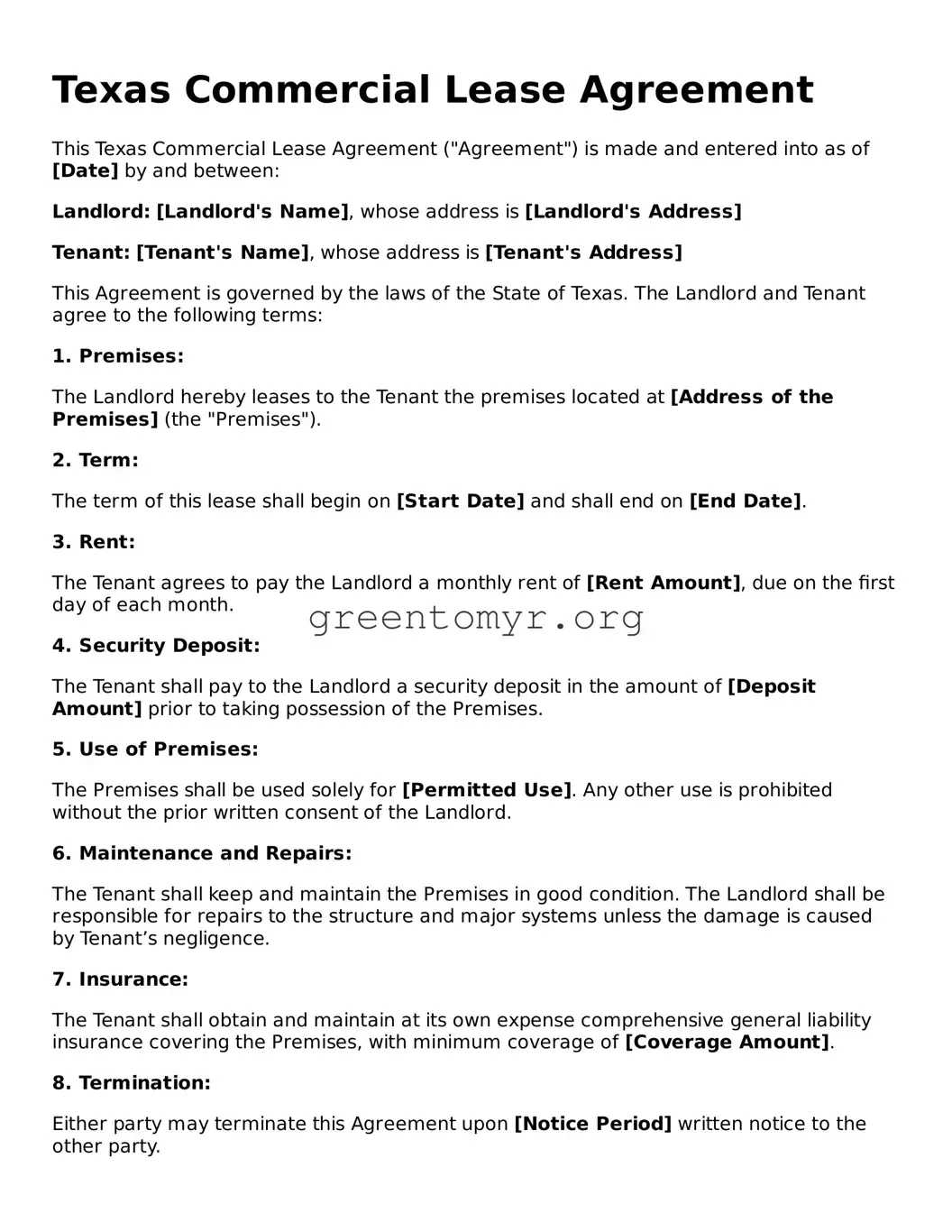Texas Commercial Lease Agreement
This Texas Commercial Lease Agreement ("Agreement") is made and entered into as of [Date] by and between:
Landlord: [Landlord's Name], whose address is [Landlord's Address]
Tenant: [Tenant's Name], whose address is [Tenant's Address]
This Agreement is governed by the laws of the State of Texas. The Landlord and Tenant agree to the following terms:
1. Premises:
The Landlord hereby leases to the Tenant the premises located at [Address of the Premises] (the "Premises").
2. Term:
The term of this lease shall begin on [Start Date] and shall end on [End Date].
3. Rent:
The Tenant agrees to pay the Landlord a monthly rent of [Rent Amount], due on the first day of each month.
4. Security Deposit:
The Tenant shall pay to the Landlord a security deposit in the amount of [Deposit Amount] prior to taking possession of the Premises.
5. Use of Premises:
The Premises shall be used solely for [Permitted Use]. Any other use is prohibited without the prior written consent of the Landlord.
6. Maintenance and Repairs:
The Tenant shall keep and maintain the Premises in good condition. The Landlord shall be responsible for repairs to the structure and major systems unless the damage is caused by Tenant’s negligence.
7. Insurance:
The Tenant shall obtain and maintain at its own expense comprehensive general liability insurance covering the Premises, with minimum coverage of [Coverage Amount].
8. Termination:
Either party may terminate this Agreement upon [Notice Period] written notice to the other party.
9. Governing Law:
This Agreement shall be governed by and construed in accordance with the laws of the State of Texas.
10. Signatures:
IN WITNESS WHEREOF, the parties hereto have executed this Texas Commercial Lease Agreement as of the day and year first above written.
Landlord Signature: ________________________ Date: ____________
Tenant Signature: ________________________ Date: ____________
